Stair Trolleys - Buyer's Guide
Date Posted:2 September 2024
Selecting the right stair trolley involves considering your specific needs, evaluating key features, and ensuring safety and durability. By understanding these factors and making an informed choice, you can enhance your efficiency and safety..
Stair trolleys are indispensable tools for transporting goods up and down stairs safely and efficiently. Whether you're handling deliveries, moving stock in a warehouse, or managing household items, a reliable stair trolley can make the task much easier. Here’s a guide to help you select the right stair trolley for your needs.
1. Assess Your Needs
Understanding your specific requirements is crucial for choosing the best stair trolley. Consider the following:
- Load Capacity: Determine the maximum weight you need to transport. Stair trolleys come in various capacities, typically ranging from 100 kg to 300 kg. Choose a trolley that comfortably handles your heaviest loads to ensure safety and efficiency.
- Stair Types: Consider the type of stairs the trolley will be used on. Some trolleys are designed for narrow or steep stairs, while others are better suited for wider or less steep steps.
- Usage Frequency: Evaluate how often you'll use the trolley. For frequent use, opt for a model that offers durability and comfort, while occasional use may allow for a more budget-friendly option.
2. Key Features
The functionality of a stair trolley depends on its features. Look for the following:
- Wheel Configuration: Stair trolleys typically feature wheels designed for stairs, such as tri-wheel or rotating wheel systems. Tri-wheel trolleys have three wheels on each side and are ideal for navigating steps smoothly, while rotating wheel systems can handle a variety of stair types.
- Frame Material: The trolley’s frame should be robust enough to support heavy loads. Common materials include steel, aluminium, and durable plastics. Steel frames offer strength and stability, while aluminium frames are lighter and more portable.
- Handle Design: Ergonomic handles can significantly affect ease of use. Look for adjustable or padded handles to reduce strain during operation. Some models also feature handles that fold away for easy storage.
- Foldability and Storage: If space is a concern, consider a stair trolley that folds for compact storage. Foldable models are especially useful in environments with limited space or when the trolley needs to be transported in a vehicle.
3. Safety Considerations
Safety is paramount when using a stair trolley. Check for:
- Braking System: Ensure the trolley has a reliable braking system to prevent it from rolling uncontrollably. Some models come with handbrakes or automatic brakes that engage when not in use.
- Load Security: Look for features that secure the load, such as straps or built-in safety rails. This prevents items from shifting or falling during transport, reducing the risk of accidents.
- Stair Compatibility: Verify that the trolley is designed to handle the type of stairs you’ll be using it on. Some trolleys are versatile enough to manage different stair configurations, while others are specialised for specific stair types.
4. Maneuverability and Ease of Use
A good stair trolley should be easy to manoeuvre and operate:
- Wheel Type: Consider the type of wheels that best suit your needs. Pneumatic wheels offer a smoother ride on various surfaces, while solid rubber wheels are maintenance-free and durable.
- Weight and Portability: Choose a trolley that is easy to carry and manoeuvre. Lightweight models can be easier to handle but ensure they still offer the strength needed for your tasks.
- Ease of Operation: Test how easy it is to operate the trolley, including climbing and descending stairs. The trolley should move smoothly and require minimal effort.
5. Build Quality and Durability
Investing in a high-quality stair trolley ensures longevity and reliability:
- Construction: Examine the construction quality of the trolley. Strong welds, reinforced joints, and high-quality materials contribute to a durable and long-lasting product.
- Brand and Warranty: Opt for trolleys from reputable brands that offer warranties. A warranty provides peace of mind and assurance of the product’s quality.
6. Cost and Value
While cost is an important factor, it’s crucial to balance it with value:
- Budget vs. Features: Determine your budget and find a trolley that offers the best combination of features and quality within that range. Sometimes investing a little more can result in a better, longer-lasting product.
- Long-Term Investment: Consider the trolley as a long-term investment. A higher-quality model may have a higher initial cost but can save money in repairs and replacements over time.



































































































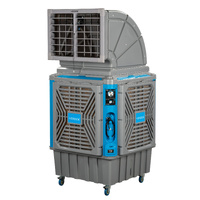










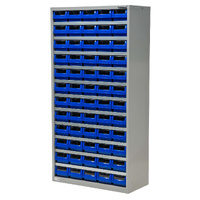

















 Trolleys & Hand Trucks
Trolleys & Hand Trucks Cage Trolleys
Cage Trolleys Cleaning Carts & Trolleys
Cleaning Carts & Trolleys Construction Trolleys
Construction Trolleys Custom Trolleys
Custom Trolleys Hand Trucks & Dollies
Hand Trucks & Dollies Laundry/Linen Trolleys
Laundry/Linen Trolleys Lifting Trolleys
Lifting Trolleys Order Picking Trolleys
Order Picking Trolleys Panel Cart Trolleys
Panel Cart Trolleys Platform Trolleys
Platform Trolleys Powered Trolleys
Powered Trolleys Shelf & Tiered Trolleys
Shelf & Tiered Trolleys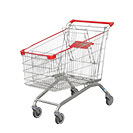 Shopping Trolleys
Shopping Trolleys Stainless Steel Trolleys
Stainless Steel Trolleys Tool Trolleys
Tool Trolleys Utility & Service Carts
Utility & Service Carts Lifting & Handling Equipment
Lifting & Handling Equipment Forklift Attachments
Forklift Attachments Jib Attachments
Jib Attachments Lifting Hoists & Pallet Hooks
Lifting Hoists & Pallet Hooks Load Skates & Tow Tugs
Load Skates & Tow Tugs Manual Stackers & Lifters
Manual Stackers & Lifters Pallet Jacks
Pallet Jacks Pallet Lifters
Pallet Lifters Pallet Rotators & Dispenser
Pallet Rotators & Dispenser Powered Pallet Trucks & Electric Lifters
Powered Pallet Trucks & Electric Lifters Scissor Lift Trolleys and Tables
Scissor Lift Trolleys and Tables Conveyor Equipment
Conveyor Equipment Conveyor Frames & Stands
Conveyor Frames & Stands Roller & Skate Conveyors
Roller & Skate Conveyors Ladders & Access Equipment
Ladders & Access Equipment Container & Yard Ramps
Container & Yard Ramps Ladders & Step Stools
Ladders & Step Stools Work Platforms & Crane Cages
Work Platforms & Crane Cages Drum Handling Equipment
Drum Handling Equipment Drum Storage & Bunding
Drum Storage & Bunding Drum Trolleys & Lifters
Drum Trolleys & Lifters Forklift Drum Handling
Forklift Drum Handling Waste Handling & Bins
Waste Handling & Bins Bin Lifters & Tippers
Bin Lifters & Tippers Plastic Waste & Wheelie Bins
Plastic Waste & Wheelie Bins Steel Waste & Tipping Bins
Steel Waste & Tipping Bins Waste Carts
Waste Carts Dangerous Goods Storage & Spillage
Dangerous Goods Storage & Spillage Aerosol Cans Storage Cages
Aerosol Cans Storage Cages Bunded Pallets & Storage
Bunded Pallets & Storage Corrosive Goods Storage Cabinets
Corrosive Goods Storage Cabinets DG Storage & Trolleys
DG Storage & Trolleys Flammable Liquid Cabinets
Flammable Liquid Cabinets Forklift Gas Storage Cages
Forklift Gas Storage Cages Site Storage
Site Storage Spill Kits
Spill Kits Shelving & Storage Equipment
Shelving & Storage Equipment Stillage & Transport Cages
Stillage & Transport Cages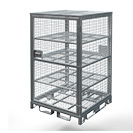 750 Series Cage Configurations
750 Series Cage Configurations Heavy Duty Cabinets
Heavy Duty Cabinets Heavy Duty Shelving
Heavy Duty Shelving Mega Bins & Pallets
Mega Bins & Pallets Packing & Workbenches
Packing & Workbenches Parts Trays & Stor-Pak Bins
Parts Trays & Stor-Pak Bins Pegboard & Louvre Panels
Pegboard & Louvre Panels Plastic Bins & Crates
Plastic Bins & Crates Plastic Handling Solutions Bins
Plastic Handling Solutions Bins Plastic Pallets
Plastic Pallets Stack & Nest Bins
Stack & Nest Bins Pallet Racking Accessories
Pallet Racking Accessories Workplace Equipment
Workplace Equipment Modular Workbenches
Modular Workbenches Electric Height-Adjustable Workbenches
Electric Height-Adjustable Workbenches Floor Matting
Floor Matting General Workplace Equipment
General Workplace Equipment Industrial Weighing Scales
Industrial Weighing Scales Packaging Machinery
Packaging Machinery Stationery Cupboards
Stationery Cupboards Storage and Stillage Cages
Storage and Stillage Cages Tool Trolleys
Tool Trolleys Tooling Cabinets
Tooling Cabinets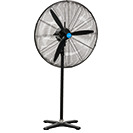 Workshop Fans and Coolers
Workshop Fans and Coolers Safety Barriers, PPE & Signage
Safety Barriers, PPE & Signage Barriers & Bollards
Barriers & Bollards First Aid Equipment
First Aid Equipment Gloves, Knives and PPE
Gloves, Knives and PPE Signage
Signage Cleaning & Site Supplies
Cleaning & Site Supplies Cleaning Equipment
Cleaning Equipment Cleaning Trolleys
Cleaning Trolleys Rubbish Bins
Rubbish Bins Signs & Traffic Supplies
Signs & Traffic Supplies Construction Equipment
Construction Equipment Construction Trolleys
Construction Trolleys Waste Handling
Waste Handling General Site Equipment
General Site Equipment Concrete Equipment
Concrete Equipment Site Storage
Site Storage Lifting Equipment
Lifting Equipment Verdex Specials
Verdex Specials










